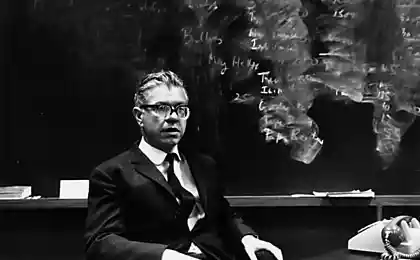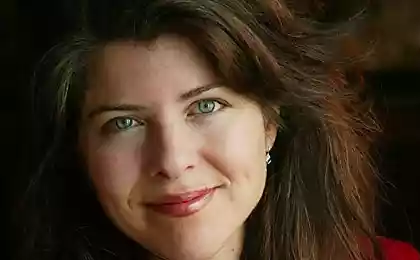1800
10 women scientists
It is believed that the discoveries that have been made by women in the future did not affect the development of mankind and have been the exception rather the rule. But this is fundamentally wrong! Let's look at the female genius that somehow not very often mentioned in stories. Vera Rubin born in 1928
Scientific career Vera Rubin was filled with criticism and hostility from her male counterparts, despite this, she stayed focused on their work, not in this respect. For the first time she experienced hostility when told his teacher of physics in high school that she took in Vassarsky college. It is not very reassuring answer, "That's fine. Everything will be fine as long as you keep away from science. "
Still, this has not discouraged Vera Rubin, and even after she was denied entry to the course of astronomy at Princeton, because it has not admitted women, she continued training and eventually became a PhD in Georgetown. Working together with Kent Ford, Rubin conducted the first study to show that the orbital velocity of stars in the outer parts of galaxies corresponds to the speed of stars in the center of the galaxy. Then it was a very unusual seeing as it was thought that if the most powerful gravitational forces there where more mass (center), the force should be decreased in the distance, causing slow orbit.
Her observations confirmed the hypothesis made earlier by a man named Fritz Zwicky, who said that some sort of invisible dark matter to be dispersed throughout the universe, without changing its speed. Rubin was able to prove that there are 10 times more dark matter in the universe than previously thought, that more than 90% of the universe is filled with it. For many years the study of Vera Rubin did not receive support because many of her male colleagues to discredit him. They believed that it does not correspond to the discovery of Newton's laws and that she must have made a miscalculation. And her doctorate and master's thesis was criticized and largely ignored, although the evidence was irrefutable.
Fortunately, the scientific community has recognized in time her work, but only because her male colleagues later confirmed this. Rubin has yet to win a Nobel Prize for his work.
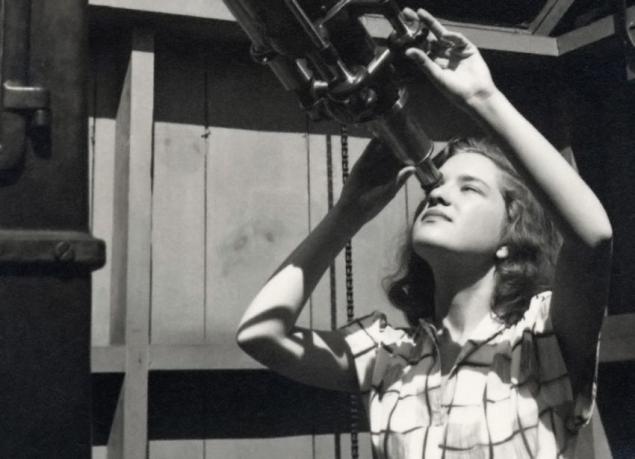
Cecilia Payne 1900 - 1979
Cecilia Payne - woman scientist, who worked hard, but it was amazing discoveries at the time denied its leaders men. She began her studies at Cambridge University in 1919, when she was given a scholarship to the study of botany, physics and chemistry. Her courses were, apparently, finished in vain as Cambridge at that time did not offer degrees to women. During the time she spent in Cambridge, Payne has found a true love for astronomy. She transferred to the Radcliffe and became the first woman to receive the title of professor of astronomy, after which many saw her talent in astronomy.
Following the publication of the six papers and a doctoral degree in 25 years, its biggest contribution to science was the discovery of some elements consist stars. "I do not know about you, but I think that the components of the stars - is a pretty big deal." Her male colleagues apparently did not think so. A man named Henry Norris Russell, who runs an amazing job considering Payne, urged her not to publish the article. His explanation was that it would be contrary to generally accepted at the time of cognition and the audience will not be accepted. Interestingly, it seems, he changed his mind after 4 years, when he miraculously found out from some of the particles is the Sun, and published an article about it. Though his methods differed from those of Payne, the conclusion was the same and was given credit for the discovery of the composition of the sun. Since floor Cecilia was struck from the history books. Ironically Payne later was honored to receive the award named Henry Norris Russell, for her contribution to astronomy.
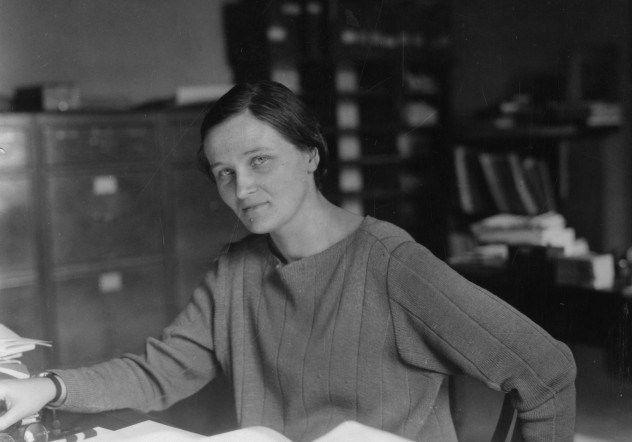
Ida Teyk 1896-1978
Ida Teyk made an enormous contribution to the field of chemistry and nuclear physics, which has been largely ignored until its discovery were later "re-committed" her male colleagues. Firstly, she was able to find two new elements, rhenium (75) and Mazury (43), believed to appear in the Mendeleev periodic table. While she is credited with the discovery of rhenium, you may notice that there is no such item as a masurium under atomic number 43 or anywhere else in the current periodic table. Well, that's because it is now known as technetium, the discovery of which is attributed to Carlo Emilio Segre and Perriera.
During the first study of male colleagues Ida Teyk suggested that the item was too rare and disappeared too quickly to be naturally found on Earth. Although the evidence Teyk were clear, they were largely ignored until Perrier and Segre artificially created element in the laboratory, and it was attributed to the discovery of what is rightfully deserved Take. In addition to this injustice Take also published work, which paved the way ideas of nuclear fission, which was later intercepted by Lise Meitner and Otto Stern. Her article, which is five years ahead of his time, described the fundamental processes of digestion, although the term had not yet been invented.
It was based on the theory of Enrico Fermi, the elements above uranium do exist and offer an explanation that the particles can decay during the shelling of neutrons, releasing enormous amounts of energy. From time to time her paper was ignored until the Manhattan Project in 1940, though Fermi was awarded the Nobel Prize for "discovery" that the new radioactive elements produced during the bombardment with neutrons. Despite her monumental discoveries, Take has never been recognized (although many blame it on its methods, not the floor).
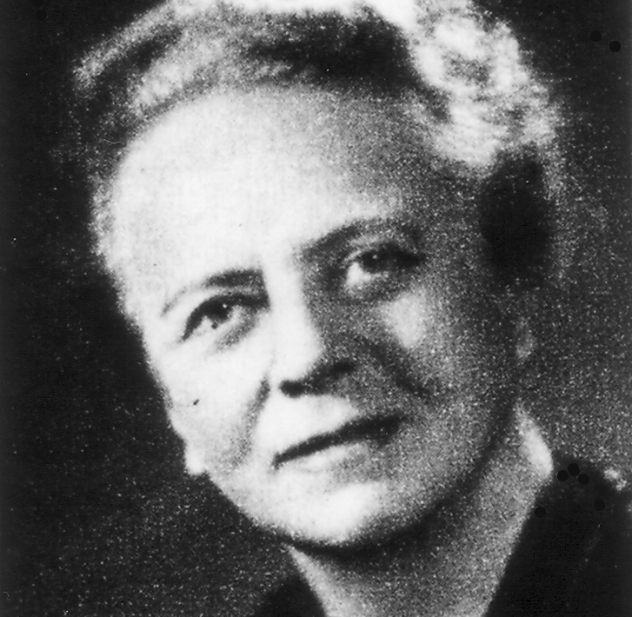
Esther Lederberg 1922-2006
Sexual discrimination Esther Lederberg was more than that her husband had eclipsed her, not that she was offended by her male colleagues. The discoveries were made by Esther together with her husband, Joshua. While they both played equally important roles, contributions Esther remained largely unrecognized, and Joshua was awarded the Nobel Prize for his research.
Esther was the first one who has solved the problem of reproducing bacterial colonies in general, with the same original form, using a technique known as replica plating. Her method was incredibly simple that it only required the use of a certain kind of velvet. Despite the myriad of significant discoveries in biology and genetics, her scientific career was difficult because she is constantly fighting for recognition from her colleagues. Much of the credit for the discovery went to her husband, Joshua. Her tenure was even revoked after Stanford demotion to associate professor of Medical Microbiology. On the other hand, Joshua was appointed the founder and chairman of the Department of Genetics. Esther was the main partner and Joshua, despite her diligent work, she has never received recognition for its many amazing discoveries.
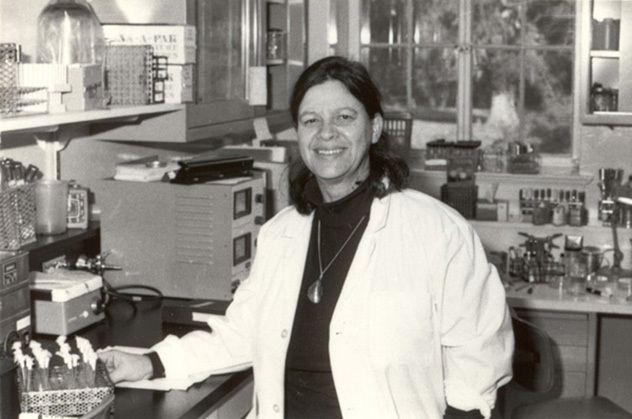
Nettie Stevens 1862-1912
If you know a little about chromosomes, you at least need to know that our sex is determined our 23rd pair of chromosomes, X and Y.
Who got all the credit for this huge biological discovery? Well, most textbooks point you to a man named Thomas Morgan, although the opening actually came from a female scientist named Nettie Stevens.
She studied the question of sex determination at the mealworms and soon realized that the floor depends on the X and Y chromosomes. While it was believed that she was working with a man named Thomas Morgan, almost all of her observations were made on their own.
Morgan later awarded the Nobel Prize for their hard work Nettie. Podsypaya insult to injury, he later published an article in the journal "Science", which said that Stevens during the experiment acted more as a technician than as a true scientist, though, as it turned out it was not true.
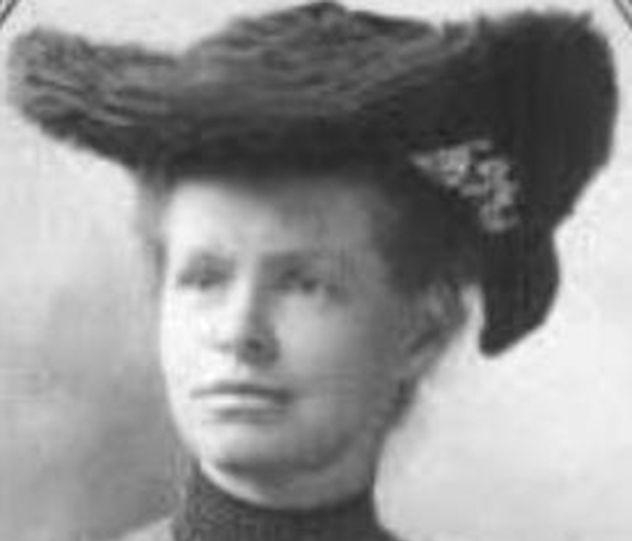
Rosalind Franklin 1920-1958
Rosalind Franklin was brilliant female scientists. This is probably the most famous case where a woman wronged her male colleagues, stealing her discovery.
If you know anything about science, you have probably heard the names of Watson and Crick, who is credited with discovering the structure of DNA. What you may not know is the controversy surrounding their "discovery", and that a much greater discovery was in the articles Rosalind Franklin, she was working.
At 33, she was hard at work on yet published discovery that could revolutionize biology. It concluded that DNA consists of two chains, and phosphate bases. The form was also confirmed by experiments with its X-ray structure of DNA as well as its measurement unit cell. At the time, she knew almost nothing about what her colleague Wilkins and Perutz showed Watson and Crick (who attended King's College), not just the X-ray image, and even a report with its recent results. With the results of scientific work in the hands of Watson and Crick presented the discovery on a silver platter.
Not only that, they received the full authorship of the study, Watson then used their friendship to persuade Rosalind that it should publish their results after they issued their own. Unfortunately, because of this, her work looks more like a confirmation than a revelation. After the "discovery" of Watson and Crick were recognized, they were awarded the Nobel Prize and became scientists whose persons namalёvany every biology textbook in America. Rosalind Franklin essentially remained unrecognized.
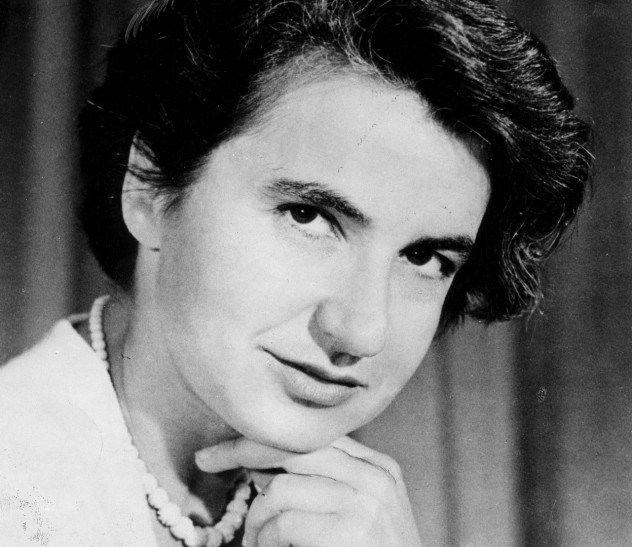
Jocelyn Bell Burnell born in 1943
Inspired by his books her father, Burnell began its work with astronomy. She was able to get a higher education with a bachelor's degree in physics at the University of Glasgow and Cambridge continued to work on his doctorate in philosophy. At the time when she made his discovery, Burnell worked at Anthony Hyuishe studying quasars. Whether working with radio telescopes, Bell saw certain constants and signals emitted by something in space.
The signals were not similar to any known signals that have ever been produced. Although she did not know the source of the signal, the opening was huge. These signals are later became known as pulsars, which are the signals that are emitted by neutron stars. These observations were quickly released and published under the name Hyuisha appearing to Burnell. Although Burnell has conducted research and made the discovery independently, Hewish was later awarded the Nobel Prize in 1974 for his discovery of pulsars. Despite the fact that at the time she was deprived of the premium and the official recognition of its discovery, it is now everywhere acknowledged that she was the first person sdelash this discovery.

Jiangxiong Wu 1912-1997
Jiangxiong Wu immigrated to America from China, where it began its work on the Manhattan Project and the development of the atomic bomb. Its biggest contribution to world science was the discovery that refuted the widely known at the time the law. In science, the "laws" - is the most widely distributed and copied the existing studies; so that the proof that a scientific law is wrong, is a pretty big deal. The law was known as the principle of conservation of parity, which is a very difficult way to prove the idea of symmetry, where the particles that are mirror images of each other, will operate in an identical manner.
Colleagues Wu, Chen Ning Yang and Tsung Dao Lee, proposed a theory that could disprove the law, and turned to Wu for help. Wu accepted their proposal and performed several experiments using cobalt 60, which has proved the fallacy of the law. Her experiments were incredibly important because it could show that one particle more likely to eject an electron than the other and it proves that they are not symmetrical. Her observation turned 30-year conviction and denied the law of conservation of parity. Yang and Lee, of course, did not make a record of her participation in the study, and in the meantime have been awarded the Nobel Prize for his "discovery" that proves that the law of conservation of parity can be broken. Wu was not even mentioned, even though it was she who conducted an experiment that actually denied the law.
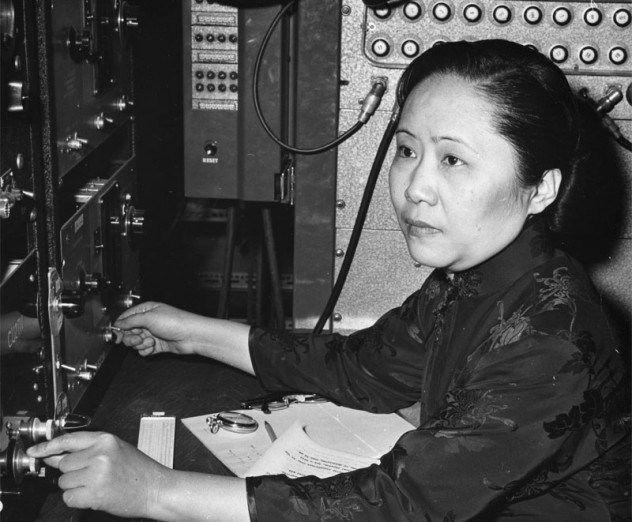
Lise Meitner 1878-1968
The process of nuclear fission was a significant discovery for the scientific world, and few people know that a woman named Lise Meitner was the first to put forward this hypothesis. Unfortunately, her work in radiology took place in the midst of World War II, and she was forced to meet in secret with a chemist named Otto Hahn.
During the Anschluss (the forcible annexation of Austria by Nazi Germany) Meitner went from Stockholm, while Hahn and his associate Fritz Stressmen continued to work on their experiments with uranium. Scientists, men were puzzled as uranium seemed to form atoms, which they thought was radium, when uranium was shelling neutrons. Meitner wrote to men, presenting the theory that the atom, possibly after a fire broke out that was later found with barium. This idea was of great importance for the world of chemistry and, working with the help of Otto Frisch, she was able to explain the theory of nuclear fission.
She also noted that in nature there is no longer an element of uranium and nuclear fission that has the potential to create a huge amount of energy. Meitner was not mentioned in the article published Stressmenom and Hahn, although its role in the discovery was extremely understated them. Men were awarded the Nobel Prize for their "discovery" in 1944, without mentioning Meitner that, as was later claimed it was a "mistake" by the award committee. While she did not get the Nobel Prize or the formal recognition of her discovery after Meitner was named the element number 119, which was a pretty good consolation prize.

Henrietta Leavitt 1868-1921
Although you might never hear about Henrietta Leavitt, its discovery radically changed the astronomy and physics, significantly changing our view of the universe. Without opening her people like Edward Hubble and all his followers who would never might consider the universe in its current value. Discovery Leavitt generally were not mentioned or recognized by those who fundamentally needed them to prove their own theory.
Leavitt began its work, with the size of the stars and making their catalog at the Observatory of Harvard. At that time, measuring and cataloging the stars when scientists men was one of the few jobs in science are considered appropriate for women. Leavitt worked as a "computer", performing methodical, repetitive tasks to collect data for its leaders men. She paid only 30 cents per hour for the intellectually exhausting work. Performing cataloging for quite some time, Leavitt began to notice the relationship between the brightness of the star and its distance from Earth. She later went on to develop the idea, known as the ratio of the brightness period, which allowed scientists to find out how far away a star from the land based on its brightness. The universe is literally opened since scientists realized that every star was not just a speck in the vast galaxy of our own, but also abroad.
Such well-known astronomers and physicists like Harlow Shapley and Edward Hubble then used its opening to base their work. Leavitt has almost disappeared, as director of Harvard refused to officially recognize its independent discovery. When Mittas Lefler last saw her in 1926 as a possible nominee for the Nobel Prize, she died before they could receive the award. Shapley was then given the award, he was proud of what he rightfully earned the recognition for the interpretation of the results.
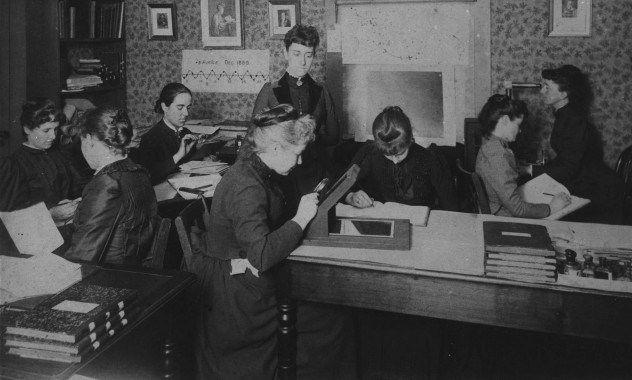
Source: listverse.com
Scientific career Vera Rubin was filled with criticism and hostility from her male counterparts, despite this, she stayed focused on their work, not in this respect. For the first time she experienced hostility when told his teacher of physics in high school that she took in Vassarsky college. It is not very reassuring answer, "That's fine. Everything will be fine as long as you keep away from science. "
Still, this has not discouraged Vera Rubin, and even after she was denied entry to the course of astronomy at Princeton, because it has not admitted women, she continued training and eventually became a PhD in Georgetown. Working together with Kent Ford, Rubin conducted the first study to show that the orbital velocity of stars in the outer parts of galaxies corresponds to the speed of stars in the center of the galaxy. Then it was a very unusual seeing as it was thought that if the most powerful gravitational forces there where more mass (center), the force should be decreased in the distance, causing slow orbit.
Her observations confirmed the hypothesis made earlier by a man named Fritz Zwicky, who said that some sort of invisible dark matter to be dispersed throughout the universe, without changing its speed. Rubin was able to prove that there are 10 times more dark matter in the universe than previously thought, that more than 90% of the universe is filled with it. For many years the study of Vera Rubin did not receive support because many of her male colleagues to discredit him. They believed that it does not correspond to the discovery of Newton's laws and that she must have made a miscalculation. And her doctorate and master's thesis was criticized and largely ignored, although the evidence was irrefutable.
Fortunately, the scientific community has recognized in time her work, but only because her male colleagues later confirmed this. Rubin has yet to win a Nobel Prize for his work.

Cecilia Payne 1900 - 1979
Cecilia Payne - woman scientist, who worked hard, but it was amazing discoveries at the time denied its leaders men. She began her studies at Cambridge University in 1919, when she was given a scholarship to the study of botany, physics and chemistry. Her courses were, apparently, finished in vain as Cambridge at that time did not offer degrees to women. During the time she spent in Cambridge, Payne has found a true love for astronomy. She transferred to the Radcliffe and became the first woman to receive the title of professor of astronomy, after which many saw her talent in astronomy.
Following the publication of the six papers and a doctoral degree in 25 years, its biggest contribution to science was the discovery of some elements consist stars. "I do not know about you, but I think that the components of the stars - is a pretty big deal." Her male colleagues apparently did not think so. A man named Henry Norris Russell, who runs an amazing job considering Payne, urged her not to publish the article. His explanation was that it would be contrary to generally accepted at the time of cognition and the audience will not be accepted. Interestingly, it seems, he changed his mind after 4 years, when he miraculously found out from some of the particles is the Sun, and published an article about it. Though his methods differed from those of Payne, the conclusion was the same and was given credit for the discovery of the composition of the sun. Since floor Cecilia was struck from the history books. Ironically Payne later was honored to receive the award named Henry Norris Russell, for her contribution to astronomy.

Ida Teyk 1896-1978
Ida Teyk made an enormous contribution to the field of chemistry and nuclear physics, which has been largely ignored until its discovery were later "re-committed" her male colleagues. Firstly, she was able to find two new elements, rhenium (75) and Mazury (43), believed to appear in the Mendeleev periodic table. While she is credited with the discovery of rhenium, you may notice that there is no such item as a masurium under atomic number 43 or anywhere else in the current periodic table. Well, that's because it is now known as technetium, the discovery of which is attributed to Carlo Emilio Segre and Perriera.
During the first study of male colleagues Ida Teyk suggested that the item was too rare and disappeared too quickly to be naturally found on Earth. Although the evidence Teyk were clear, they were largely ignored until Perrier and Segre artificially created element in the laboratory, and it was attributed to the discovery of what is rightfully deserved Take. In addition to this injustice Take also published work, which paved the way ideas of nuclear fission, which was later intercepted by Lise Meitner and Otto Stern. Her article, which is five years ahead of his time, described the fundamental processes of digestion, although the term had not yet been invented.
It was based on the theory of Enrico Fermi, the elements above uranium do exist and offer an explanation that the particles can decay during the shelling of neutrons, releasing enormous amounts of energy. From time to time her paper was ignored until the Manhattan Project in 1940, though Fermi was awarded the Nobel Prize for "discovery" that the new radioactive elements produced during the bombardment with neutrons. Despite her monumental discoveries, Take has never been recognized (although many blame it on its methods, not the floor).

Esther Lederberg 1922-2006
Sexual discrimination Esther Lederberg was more than that her husband had eclipsed her, not that she was offended by her male colleagues. The discoveries were made by Esther together with her husband, Joshua. While they both played equally important roles, contributions Esther remained largely unrecognized, and Joshua was awarded the Nobel Prize for his research.
Esther was the first one who has solved the problem of reproducing bacterial colonies in general, with the same original form, using a technique known as replica plating. Her method was incredibly simple that it only required the use of a certain kind of velvet. Despite the myriad of significant discoveries in biology and genetics, her scientific career was difficult because she is constantly fighting for recognition from her colleagues. Much of the credit for the discovery went to her husband, Joshua. Her tenure was even revoked after Stanford demotion to associate professor of Medical Microbiology. On the other hand, Joshua was appointed the founder and chairman of the Department of Genetics. Esther was the main partner and Joshua, despite her diligent work, she has never received recognition for its many amazing discoveries.

Nettie Stevens 1862-1912
If you know a little about chromosomes, you at least need to know that our sex is determined our 23rd pair of chromosomes, X and Y.
Who got all the credit for this huge biological discovery? Well, most textbooks point you to a man named Thomas Morgan, although the opening actually came from a female scientist named Nettie Stevens.
She studied the question of sex determination at the mealworms and soon realized that the floor depends on the X and Y chromosomes. While it was believed that she was working with a man named Thomas Morgan, almost all of her observations were made on their own.
Morgan later awarded the Nobel Prize for their hard work Nettie. Podsypaya insult to injury, he later published an article in the journal "Science", which said that Stevens during the experiment acted more as a technician than as a true scientist, though, as it turned out it was not true.

Rosalind Franklin 1920-1958
Rosalind Franklin was brilliant female scientists. This is probably the most famous case where a woman wronged her male colleagues, stealing her discovery.
If you know anything about science, you have probably heard the names of Watson and Crick, who is credited with discovering the structure of DNA. What you may not know is the controversy surrounding their "discovery", and that a much greater discovery was in the articles Rosalind Franklin, she was working.
At 33, she was hard at work on yet published discovery that could revolutionize biology. It concluded that DNA consists of two chains, and phosphate bases. The form was also confirmed by experiments with its X-ray structure of DNA as well as its measurement unit cell. At the time, she knew almost nothing about what her colleague Wilkins and Perutz showed Watson and Crick (who attended King's College), not just the X-ray image, and even a report with its recent results. With the results of scientific work in the hands of Watson and Crick presented the discovery on a silver platter.
Not only that, they received the full authorship of the study, Watson then used their friendship to persuade Rosalind that it should publish their results after they issued their own. Unfortunately, because of this, her work looks more like a confirmation than a revelation. After the "discovery" of Watson and Crick were recognized, they were awarded the Nobel Prize and became scientists whose persons namalёvany every biology textbook in America. Rosalind Franklin essentially remained unrecognized.

Jocelyn Bell Burnell born in 1943
Inspired by his books her father, Burnell began its work with astronomy. She was able to get a higher education with a bachelor's degree in physics at the University of Glasgow and Cambridge continued to work on his doctorate in philosophy. At the time when she made his discovery, Burnell worked at Anthony Hyuishe studying quasars. Whether working with radio telescopes, Bell saw certain constants and signals emitted by something in space.
The signals were not similar to any known signals that have ever been produced. Although she did not know the source of the signal, the opening was huge. These signals are later became known as pulsars, which are the signals that are emitted by neutron stars. These observations were quickly released and published under the name Hyuisha appearing to Burnell. Although Burnell has conducted research and made the discovery independently, Hewish was later awarded the Nobel Prize in 1974 for his discovery of pulsars. Despite the fact that at the time she was deprived of the premium and the official recognition of its discovery, it is now everywhere acknowledged that she was the first person sdelash this discovery.

Jiangxiong Wu 1912-1997
Jiangxiong Wu immigrated to America from China, where it began its work on the Manhattan Project and the development of the atomic bomb. Its biggest contribution to world science was the discovery that refuted the widely known at the time the law. In science, the "laws" - is the most widely distributed and copied the existing studies; so that the proof that a scientific law is wrong, is a pretty big deal. The law was known as the principle of conservation of parity, which is a very difficult way to prove the idea of symmetry, where the particles that are mirror images of each other, will operate in an identical manner.
Colleagues Wu, Chen Ning Yang and Tsung Dao Lee, proposed a theory that could disprove the law, and turned to Wu for help. Wu accepted their proposal and performed several experiments using cobalt 60, which has proved the fallacy of the law. Her experiments were incredibly important because it could show that one particle more likely to eject an electron than the other and it proves that they are not symmetrical. Her observation turned 30-year conviction and denied the law of conservation of parity. Yang and Lee, of course, did not make a record of her participation in the study, and in the meantime have been awarded the Nobel Prize for his "discovery" that proves that the law of conservation of parity can be broken. Wu was not even mentioned, even though it was she who conducted an experiment that actually denied the law.

Lise Meitner 1878-1968
The process of nuclear fission was a significant discovery for the scientific world, and few people know that a woman named Lise Meitner was the first to put forward this hypothesis. Unfortunately, her work in radiology took place in the midst of World War II, and she was forced to meet in secret with a chemist named Otto Hahn.
During the Anschluss (the forcible annexation of Austria by Nazi Germany) Meitner went from Stockholm, while Hahn and his associate Fritz Stressmen continued to work on their experiments with uranium. Scientists, men were puzzled as uranium seemed to form atoms, which they thought was radium, when uranium was shelling neutrons. Meitner wrote to men, presenting the theory that the atom, possibly after a fire broke out that was later found with barium. This idea was of great importance for the world of chemistry and, working with the help of Otto Frisch, she was able to explain the theory of nuclear fission.
She also noted that in nature there is no longer an element of uranium and nuclear fission that has the potential to create a huge amount of energy. Meitner was not mentioned in the article published Stressmenom and Hahn, although its role in the discovery was extremely understated them. Men were awarded the Nobel Prize for their "discovery" in 1944, without mentioning Meitner that, as was later claimed it was a "mistake" by the award committee. While she did not get the Nobel Prize or the formal recognition of her discovery after Meitner was named the element number 119, which was a pretty good consolation prize.

Henrietta Leavitt 1868-1921
Although you might never hear about Henrietta Leavitt, its discovery radically changed the astronomy and physics, significantly changing our view of the universe. Without opening her people like Edward Hubble and all his followers who would never might consider the universe in its current value. Discovery Leavitt generally were not mentioned or recognized by those who fundamentally needed them to prove their own theory.
Leavitt began its work, with the size of the stars and making their catalog at the Observatory of Harvard. At that time, measuring and cataloging the stars when scientists men was one of the few jobs in science are considered appropriate for women. Leavitt worked as a "computer", performing methodical, repetitive tasks to collect data for its leaders men. She paid only 30 cents per hour for the intellectually exhausting work. Performing cataloging for quite some time, Leavitt began to notice the relationship between the brightness of the star and its distance from Earth. She later went on to develop the idea, known as the ratio of the brightness period, which allowed scientists to find out how far away a star from the land based on its brightness. The universe is literally opened since scientists realized that every star was not just a speck in the vast galaxy of our own, but also abroad.
Such well-known astronomers and physicists like Harlow Shapley and Edward Hubble then used its opening to base their work. Leavitt has almost disappeared, as director of Harvard refused to officially recognize its independent discovery. When Mittas Lefler last saw her in 1926 as a possible nominee for the Nobel Prize, she died before they could receive the award. Shapley was then given the award, he was proud of what he rightfully earned the recognition for the interpretation of the results.

Source: listverse.com











